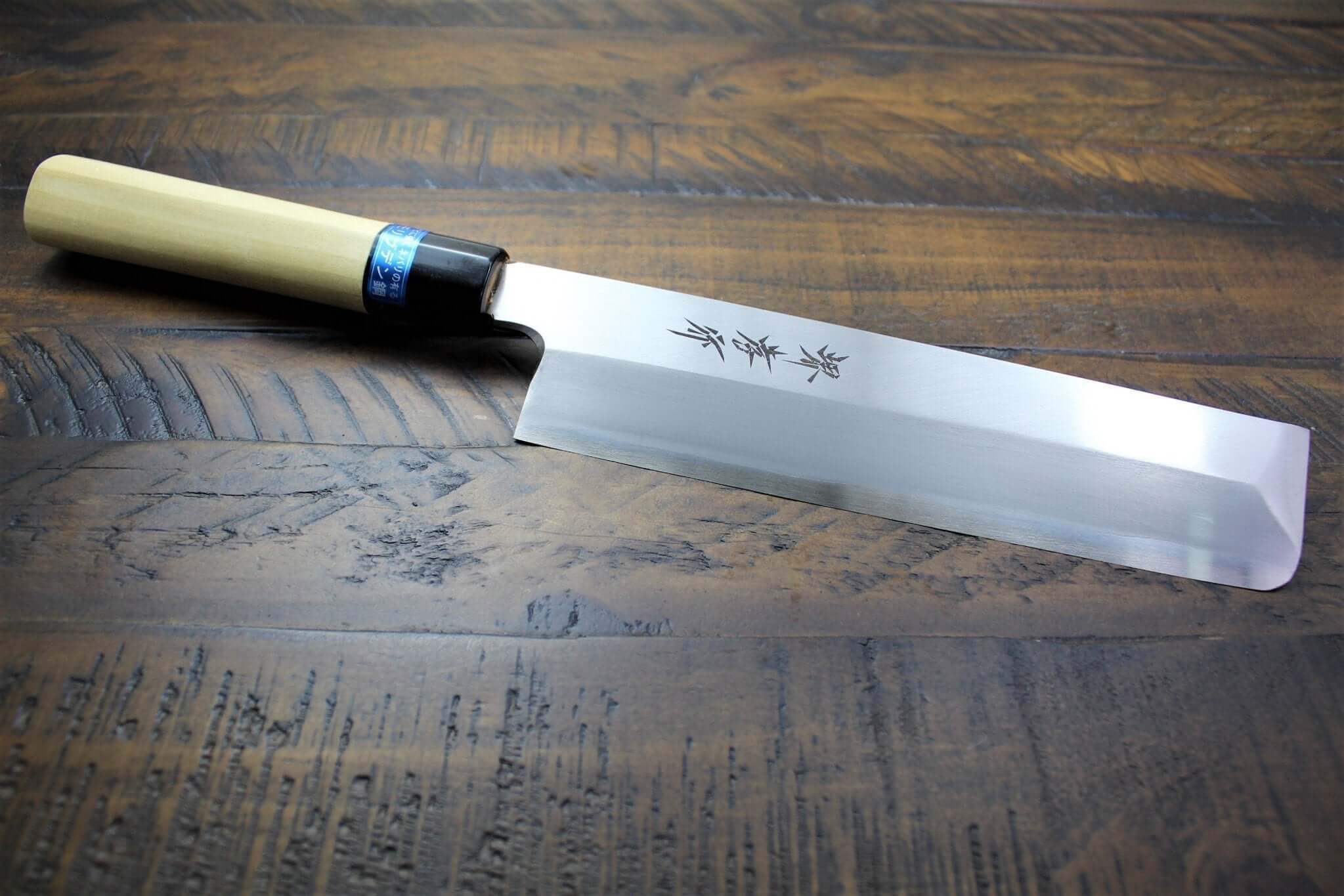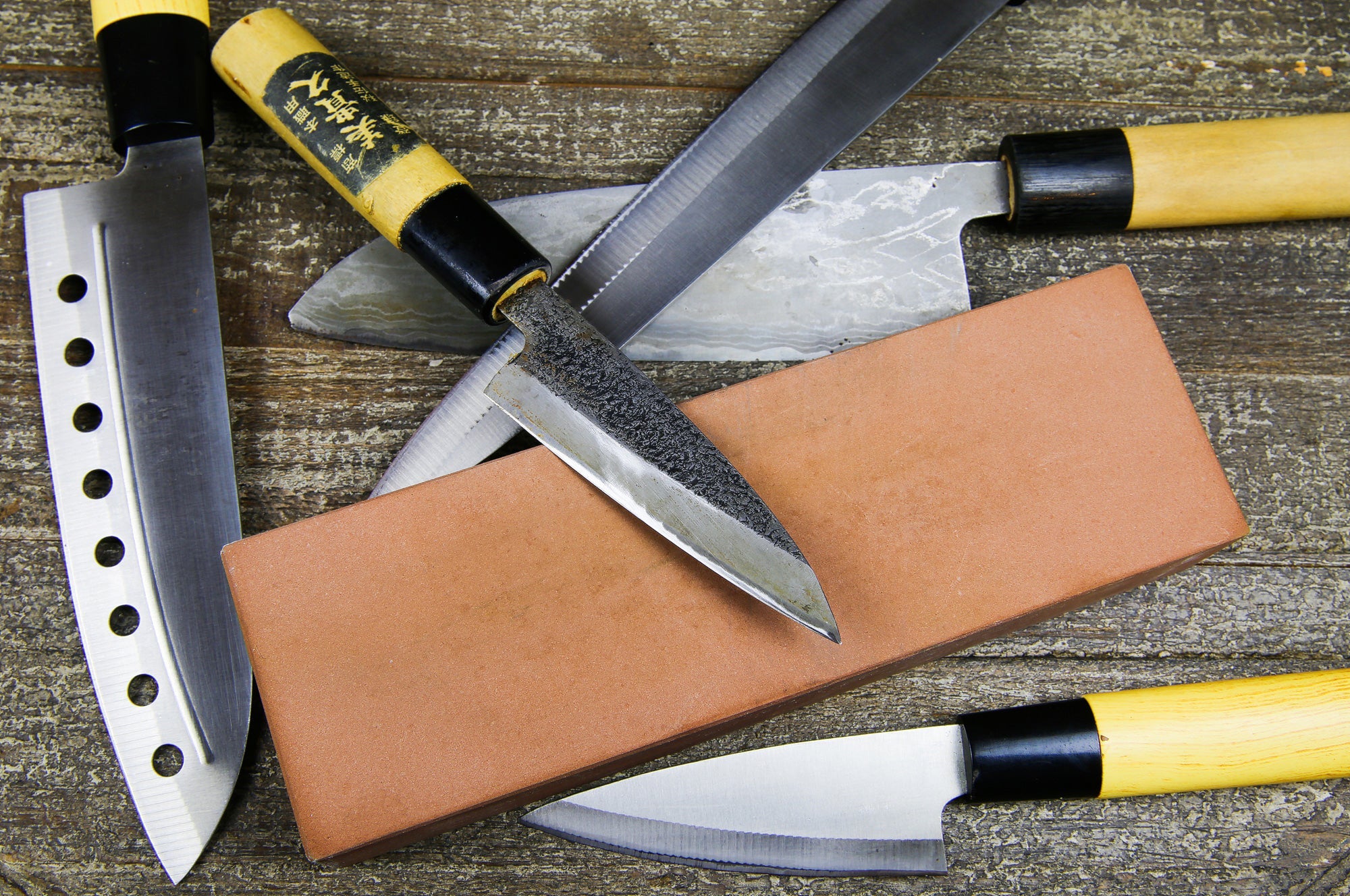
Usuba Vs. Nakiri Knives: Key Differences Explained
When exploring the world of Japanese vegetable knives, two stand out for their precision and craftsmanship: the Usuba and the Nakiri. While both are designed for slicing vegetables with precision, their differences in blade shape, functionality, and technique can make one better suited to your cooking style than the other. So, what is a Nakiri knife good for and is a Nakiri knife worth it? Let’s dive into the key differences between these two popular blades to help you decide which one should have a place in your kitchen.
What Is a Nakiri Knife?
The Nakiri knife is a double-beveled blade, meaning the edge is sharpened symmetrically on both sides. Its design allows it to be used by both left- and right-handed individuals, making it an accessible tool for all home cooks and professionals. The Nakiri is often called the "vegetable knife" because of its exceptional ability to chop, slice, and mince vegetables efficiently. The rectangular blade, combined with its flat edge, allows the entire surface to make contact with the cutting board, making chopping smooth and precise.
This knife is ideal for cutting all types of vegetables, from leafy greens to harder root vegetables like carrots and daikon radishes. Its flat blade minimizes the need for any rocking motion, making it perfect for quick, clean cuts without excessive effort. Whether you're dicing onions for a stir-fry or slicing tomatoes for a salad, the Nakiri knife is a true workhorse.
What Is an Usuba Knife?
The Usuba knife, in contrast, is a single-bevel blade, meaning it is only sharpened on one side. This gives it a unique edge that is incredibly sharp, making it ideal for precision tasks. The Usuba is often used by professional chefs, particularly in Japanese kitchens, for its ability to make very fine, delicate slices. It is best known for its use in sushi preparation, where it is employed to slice vegetables into paper-thin, uniform slices for garnishes or fillings.
The Usuba knife features a longer, thinner blade compared to the Nakiri, with a sharper angle and a single-bevel design that makes it more suitable for right-handed users. Although left-handed Usuba’s are available, they are quite rare and often come with a higher price tag. Because of its single bevel, this knife requires more skill to use effectively. It is not as forgiving as the Nakiri and demands practice to master.
Key Differences in Blade Design
One of the most noticeable differences between the Nakiri and Usuba knives is the blade design. The Nakiri knife’s double bevel makes it easier to use for most people and simpler to maintain. Its blade is typically thinner and more flexible, allowing for efficient vegetable slicing without the need for extensive technique.
On the other hand, the Usuba’s single bevel offers a sharper and more delicate edge that cuts with less effort, resulting in cleaner cuts. However, it requires more experience and control, as it tends to pull to one side due to its asymmetrical design.
Versatility vs. Precision
The Nakiri knife is built for versatility. Its flat, rectangular blade allows for efficient chopping, slicing, and dicing of all vegetables. It’s a true all-rounder in the kitchen, handling everything from root vegetables to leafy greens. The knife's forgiving nature makes it an excellent choice for home cooks looking to improve their vegetable prep skills.
In contrast, the Usuba knife excels at precision cutting. Its thin, single-bevel blade allows for incredibly fine slices, making it perfect for tasks that require attention to detail, such as carving garnishes or slicing delicate vegetables like cucumbers and radishes. It is a specialty knife, primarily suited for professional use or serious enthusiasts.
Ease of Use: Nakiri vs. Usuba
For those new to Japanese knives, the Nakiri is generally the easier knife to use. It does not require the same level of technique as the Usuba, which can be tricky to handle due to its single-bevel edge. If you are wondering whether a Nakiri knife is worth it, consider your skill level and how much time you are willing to invest in learning a more specialized technique. The Nakiri’s design allows for quicker, more intuitive use, making it suitable for beginner and intermediate cooks.
The Usuba, on the other hand, is best suited for those who want to refine their cutting technique. With its thinner, sharper edge and the need for a specific cutting motion, it is ideal for professional chefs or those who are highly focused on precise vegetable prep.
Sharpening and Maintenance
When it comes to sharpening, the Nakiri knife is the easier of the two. Because it is a double-bevel blade, it can be sharpened symmetrically using standard methods and tools. It is suitable for both right- and left-handed users, with less risk of dulling from improper sharpening.
The Usuba requires more specialized care. Its single bevel design means it needs to be sharpened on one side only, and the angle must be precise. This can be difficult for beginners, and a right-handed Usuba will not work for left-handed users unless specifically made for them. Below are the key distinctions and considerations for sharpening and maintaining the Nakiri and Usuba knives, which highlight their unique features and requirements:
- Symmetry and Ease of Sharpening: The Nakiri knife’s double-bevel edge allows for easy sharpening using standard methods, making it suitable for both right- and left-handed users. Its symmetrical design minimizes the risk of damage during sharpening and ensures consistent performance.
- Beginner-Friendly Maintenance: With its straightforward design, the Nakiri is ideal for individuals with minimal sharpening experience. It offers a more forgiving sharpening process, requiring less precision compared to single-bevel knives, and can be maintained easily at home.
- Single-Bevel Complexity: The Usuba knife’s single-bevel blade requires specialized sharpening techniques. The bevel is only sharpened on one side, which means that improper angles can quickly affect the blade's performance, demanding a higher skill level for maintenance.
- Left- and Right-Handed Considerations: Unlike the Nakiri, which works for both left- and right-handed users, the Usuba is typically designed for right-handed use. Left-handed versions are available but are rare and often custom-made, leading to increased cost and limited availability.
- Expert-Level Sharpening Requirements: Due to its single bevel, the Usuba requires sharpening tools designed specifically for single-bevel edges. This makes its maintenance more challenging and may necessitate professional sharpening to preserve its sharpness and prevent damage.
Which Knife Is Right for You?
Deciding between the Usuba and Nakiri knife comes down to your personal needs and skill level in the kitchen. If you are looking for a knife that is easy to use for general vegetable prep, the Nakiri is the better choice. It offers efficiency and comfort for daily tasks, especially for those just starting with Japanese vegetable knives.
If you are a professional chef or a home cook looking to elevate your skills, the Usuba might be the right option. Its ability to slice vegetables with extreme precision makes it perfect for decorative cutting or fine sushi work. However, it is important to remember that using an Usuba requires more expertise, and sharpening it properly is not as straightforward as with a Nakiri.
How Hasu-Seizo LLC Helps You Choose the Perfect Knife
At Hasu-Seizo LLC, we understand the importance of selecting the right knife for your kitchen needs. We offer a curated collection of Japanese vegetable knives that are crafted with precision and care by master artisans.
Whether you are looking for a versatile vegetable knife or a more specialized tool, our selection has something for everyone. Visit us today to explore our Nakiri knives and find the perfect match for your culinary journey.


